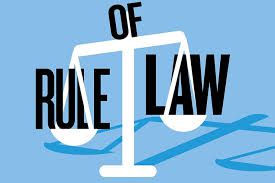How to File Patent under IPR
Filing a patent under intellectual property rights (IPR) is a pivotal move
for inventors and innovators aiming to safeguard their creations and establish
exclusive rights to their inventions. A patent provides its holder with the
legal authority to prevent others from making, using, selling, or importing
their invention without consent for a specified period. Mastery of the patent
filing process is crucial for maneuvering through the intricacies of
intellectual property law and amplifying the value of one's innovation.
Types of Patents
Several categories of patents exist, each tailored to shield different facets of innovation:
Utility Patents: These patents, the most prevalent, safeguard new and useful processes, machines, articles of manufacture, or compositions of matter. Utility patents primarily safeguard the functional attributes of an invention.
Design Patents: Reserved for preserving the ornamental or aesthetic aspects of an invention, such as its shape, configuration, or surface ornamentation, design patents are instrumental in protecting the unique visual appeal of products.
Plant Patents: These patents are conferred for novel and distinct plant varieties that have been reproduced asexually, like through grafting or budding. They secure the inventor's prerogative to exclusively propagate the plant for a stipulated period.
Steps to File a Patent
The patent filing process encompasses several pivotal steps, commencing from conducting a thorough patent search to drafting and submitting a patent application. Here's a comprehensive walkthrough of the patent filing procedure:
Step 1: Conduct a Patent Search
Before initiating the patent application, conducting an exhaustive search is imperative to ascertain the novelty and non-obviousness of the invention. This search helps pinpoint existing patents, published patent applications, and pertinent literature that could impact the patentability of the invention. Online databases like the United States Patent and Trademark Office (USPTO) database or commercial patent search engines facilitate this quest.
Step 2: Evaluate Patentability
Post the patent search, assess the patentability of the invention based on the findings. Determine whether the invention meets the requisite criteria, including novelty, non-obviousness, and utility. If the invention satisfies these benchmarks and isn't covered by existing patents, it may qualify for patent protection.
Step 3: Draft a Patent Application
Drafting a patent application demands precision and meticulousness, necessitating precise language and comprehensive descriptions of the invention.
A typical patent application includes:
Step 4: File the Patent Application
Once the patent application is drafted, it must be filed with the pertinent patent office. The filing procedure varies contingent upon the jurisdiction where patent protection is sought. In the United States, patent applications are submitted to the USPTO, while the European Patent Office (EPO) handles patent filings in Europe. Including the requisite filing fees and any essential supporting documents with the patent application is imperative.
Step 5: Examination and Prosecution
Subsequent to filing the patent application, it undergoes examination by a patent examiner to gauge its patentability. The examiner scrutinizes the application to verify if it meets the legal requisites for patent protection. Throughout this phase, the examiner may issue office actions soliciting additional information or amendments to the application.
Step 6: Patent Grant
If the patent examiner deems the invention meets the patentability criteria, a patent is granted, and a patent certificate is issued. This patent grant confers exclusive rights to the invention for the duration of the patent term, typically 20 years from the filing date. Post-grant, the patent holder is tasked with maintaining the patent by remitting periodic maintenance fees.
Conclusion
Filing a patent under intellectual property rights constitutes a critical stride in safeguarding inventions and establishing exclusive rights to innovations. By comprehending the patent filing process and collaborating with adept patent professionals, inventors can navigate the intricacies of intellectual property law and optimize the value of their creations. Patents not only shield individual inventors but also foster innovation and economic progress by incentivizing investment in research and development.
Understanding Patents and Intellectual Property Rights
Patents stand as a form of intellectual property protection bestowed by governments upon inventors for new and useful inventions. They furnish inventors with exclusive rights to their innovations for a finite period, usually 20 years from the date of patent application filing. In exchange for divulging their invention to the public, patent holders are endowed with the privilege to prohibit others from commercially exploiting their creation.Types of Patents
Several categories of patents exist, each tailored to shield different facets of innovation:
Utility Patents: These patents, the most prevalent, safeguard new and useful processes, machines, articles of manufacture, or compositions of matter. Utility patents primarily safeguard the functional attributes of an invention.
Design Patents: Reserved for preserving the ornamental or aesthetic aspects of an invention, such as its shape, configuration, or surface ornamentation, design patents are instrumental in protecting the unique visual appeal of products.
Plant Patents: These patents are conferred for novel and distinct plant varieties that have been reproduced asexually, like through grafting or budding. They secure the inventor's prerogative to exclusively propagate the plant for a stipulated period.
Steps to File a Patent
The patent filing process encompasses several pivotal steps, commencing from conducting a thorough patent search to drafting and submitting a patent application. Here's a comprehensive walkthrough of the patent filing procedure:
Step 1: Conduct a Patent Search
Before initiating the patent application, conducting an exhaustive search is imperative to ascertain the novelty and non-obviousness of the invention. This search helps pinpoint existing patents, published patent applications, and pertinent literature that could impact the patentability of the invention. Online databases like the United States Patent and Trademark Office (USPTO) database or commercial patent search engines facilitate this quest.
Step 2: Evaluate Patentability
Post the patent search, assess the patentability of the invention based on the findings. Determine whether the invention meets the requisite criteria, including novelty, non-obviousness, and utility. If the invention satisfies these benchmarks and isn't covered by existing patents, it may qualify for patent protection.
Step 3: Draft a Patent Application
Drafting a patent application demands precision and meticulousness, necessitating precise language and comprehensive descriptions of the invention.
A typical patent application includes:
- Title of the invention
- Background of the invention
- Summary of the invention
- Detailed description of the invention, often accompanied by drawings or diagrams
- Claims delineating the scope of protection sought
- Abstract encapsulating the essence of the invention
Step 4: File the Patent Application
Once the patent application is drafted, it must be filed with the pertinent patent office. The filing procedure varies contingent upon the jurisdiction where patent protection is sought. In the United States, patent applications are submitted to the USPTO, while the European Patent Office (EPO) handles patent filings in Europe. Including the requisite filing fees and any essential supporting documents with the patent application is imperative.
Step 5: Examination and Prosecution
Subsequent to filing the patent application, it undergoes examination by a patent examiner to gauge its patentability. The examiner scrutinizes the application to verify if it meets the legal requisites for patent protection. Throughout this phase, the examiner may issue office actions soliciting additional information or amendments to the application.
Step 6: Patent Grant
If the patent examiner deems the invention meets the patentability criteria, a patent is granted, and a patent certificate is issued. This patent grant confers exclusive rights to the invention for the duration of the patent term, typically 20 years from the filing date. Post-grant, the patent holder is tasked with maintaining the patent by remitting periodic maintenance fees.
Conclusion
Filing a patent under intellectual property rights constitutes a critical stride in safeguarding inventions and establishing exclusive rights to innovations. By comprehending the patent filing process and collaborating with adept patent professionals, inventors can navigate the intricacies of intellectual property law and optimize the value of their creations. Patents not only shield individual inventors but also foster innovation and economic progress by incentivizing investment in research and development.
Law Article in India
Legal Question & Answers
Lawyers in India - Search By City
LawArticles
How To File For Mutual Divorce In Delhi

How To File For Mutual Divorce In Delhi Mutual Consent Divorce is the Simplest Way to Obtain a D...
Increased Age For Girls Marriage

It is hoped that the Prohibition of Child Marriage (Amendment) Bill, 2021, which intends to inc...
Facade of Social Media

One may very easily get absorbed in the lives of others as one scrolls through a Facebook news ...
Section 482 CrPc - Quashing Of FIR: Guid...

The Inherent power under Section 482 in The Code Of Criminal Procedure, 1973 (37th Chapter of t...
The Uniform Civil Code (UCC) in India: A...

The Uniform Civil Code (UCC) is a concept that proposes the unification of personal laws across...
Role Of Artificial Intelligence In Legal...

Artificial intelligence (AI) is revolutionizing various sectors of the economy, and the legal i...







Please Drop Your Comments